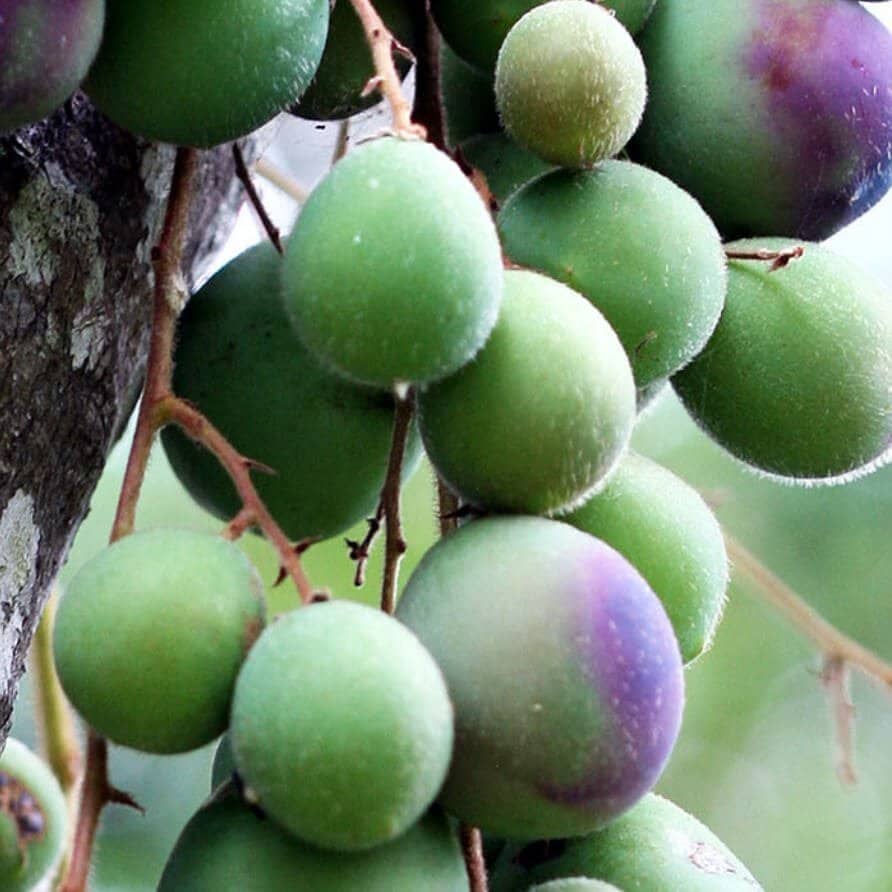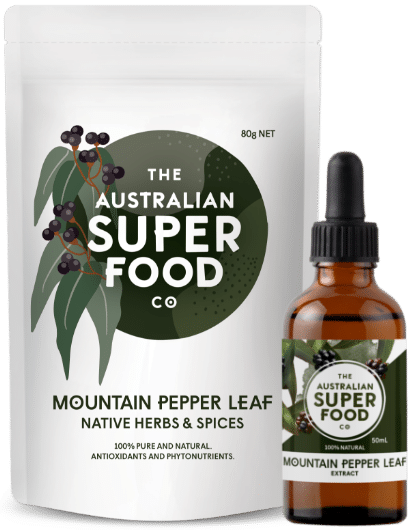Mountain pepper leaf and mountain pepperberry (also known as Tasmannia lanceolata or Tasmanian Pepperberry) grow naturally in the forest and the cool climate of southern New South Wales, Victoria and Tasmania.
This small tree grows up to five metres in height and only the female trees bear fruit. The fruit is like a berry, and starts off dark red in colour and turns black on ripening.
Traditionally, mountain pepper was used for its antiseptic properties and flavour. Both the leaves and fruit were used. Indigenous Australians suffering from sore gums and toothaches often crushed the berries with water to make a paste, which was then applied to the mouth to treat the infection. It was also added to food as a flavour enhancer.
Download The Australian Superfood Co provenance map here.
Flavour:
Milder than the Mountain Pepperberry, but the overall flavour is still very earthy and peppery, due to the high polygonal properties and has a spicy, cinnamon-like taste.
Palate:
Earthy, peppery, cinnamon-like taste on the front palate with herbaceous, spicy notes and developing heat on the back palate.
Aroma:
Distinct spicy aroma of pepper and the Australian bushland, resembling dry paperbark, cinnamon and herbs.
The mountain pepper plant is used both ornamentally and in food preparation, and the tree produces two products: the berry and the leaf. The berries are dark-blue to black in colour and have a sweet, aromatic peppery taste. The leaves have strong antimicrobial activity against food spoilage organisms and can be used for cooking, preserving foods and medicinal purposes. The leaves, stems and berries produce approximately three times the antioxidants of blueberries.
Mountain pepper leaf is used in spice blends and baking products, and goes especially well with sauces, chutneys and condiments. Try adding it to your favourite potato dish. It adds a delicious peppery bite to pasta dough, savoury biscuits and bread, and can be added to curries, slow-cooked foods, cheeses and egg dishes, to enhance the flavour.
Mountain pepper leaf pairs well with dairy and dips, oil and vinegar-based meat marinades and salad dressings, meat-based sauces and egg-based condiments. The leaf complements fish, seafood, chicken, pork, lamb, beef and game meat, and pairs perfectly with most vegetables.
It lifts the profile of alcoholic beverages such as gin, vodka, white rum, Cointreau and tequila.
Click here for delicious Mountain Pepper Leaf recipes.










